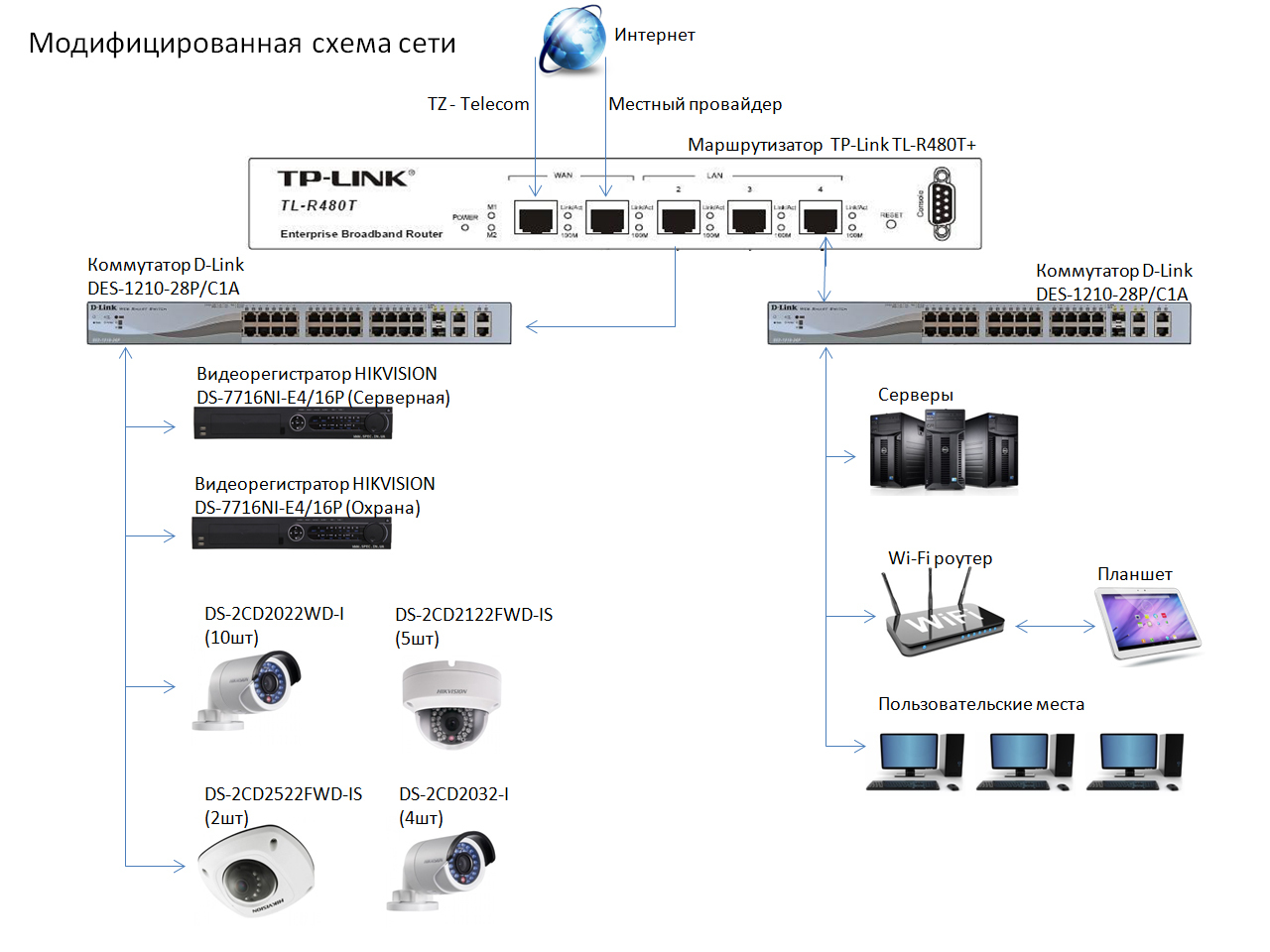Answer the question
In order to leave comments, you need to log in
How to separate the IP video surveillance network from the computer network?
Hello, friends!
There is an office network organized as follows: 
Internet from two providers comes to the TP-Link TL-R480T + router, then the signal goes through the LAN output to the D-Link DES-1210-28P / C1A switch, to which two servers are connected, Wi- Fi router, and, in fact, employees' computers. Everything worked fine until IP video surveillance was introduced.
We connected it according to the following scheme: another similar one was included in the above-mentioned switch, and two HIKVISION DS-7716NI-E4 / 16P video recorders (recording to built-in hard drives) and 21 cameras of models DS-2CD2022WD-I (10pcs), DS -2CD2122FWD-IS (5pcs), DS-2CD2522FWD-IS (2pcs) and DS-2CD2032-I (4pcs). At the same time, in the network (in the "Network" section in Windows), all cameras are visible from office computers, but (for some reason) DVRs are not visible. That is, apparently, the second switch did not create a subnet, but joined the existing one. The IP addresses of all devices on the network are static. And, as you can probably guess, the speed of data transfer over the network has dropped dramatically.
Can you please tell me how to reconfigure this system so as to separate the IP video surveillance network from the network of computers, while maintaining access to the DVR for the supervisor's computer via the internal network?
The first option that came to mind was to reconnect the video surveillance switch (D-Link DES-1210-28P/C1A) from the network switch (D-Link DES-1210-28P/C1A) to the router (TP-Link TL-R480T+), having received the following scheme: 
In this case, three things do not make sense to me:
1. Is it possible to provide interaction between these networks, that is, access to the DVR to the boss’s computer not via the Internet, but via the internal network (it turns out, through the TP-Link TL-R480T + router) ?
2. If possible, will such a solution remove the load from cameras on a network of computers?
3. Perhaps you do not need to change the current connection scheme, but reconfigure the video surveillance switch so that it creates its own separate network? Will it be possible with this solution to provide access to the video recorder from the boss's computer?
In addition, there is another question: after the separation of networks, and, accordingly, changing the mask of the video surveillance network, it will be necessary to change the IP addresses of the cameras. Will the recordings from the cameras on the DVRs be lost? Will there be any other changes to the video surveillance system?
If my questions seem too stupid for you, please do not throw rotten eggs, but try to help, or at least recommend where to dig. This is the first time I've dealt with a similar issue, and, accordingly, the experience is zero.
Thank you!
Answer the question
In order to leave comments, you need to log in
There are only three ways to separate networks:
1. separate computers and cameras into different subnets,
2. separate into different vlans,
3. extend a separate physical network for cameras.
Choose.
IMHO, put the modified network scheme, Dlink'i in the mode of "unmanaged" switches.
The network is not very large, problems should not arise with the current version. Check, most likely, multicast is enabled on the cameras or recorders, which clogs the switches with garbage.
Z.Y. connect switches to TpLink through trunk ports (26-28), cameras to user ones. After that, the traffic between the registrars and the rest of the network will only be working, within 2-4 megabits per connected user.
Didn't find what you were looking for?
Ask your questionAsk a Question
731 491 924 answers to any question